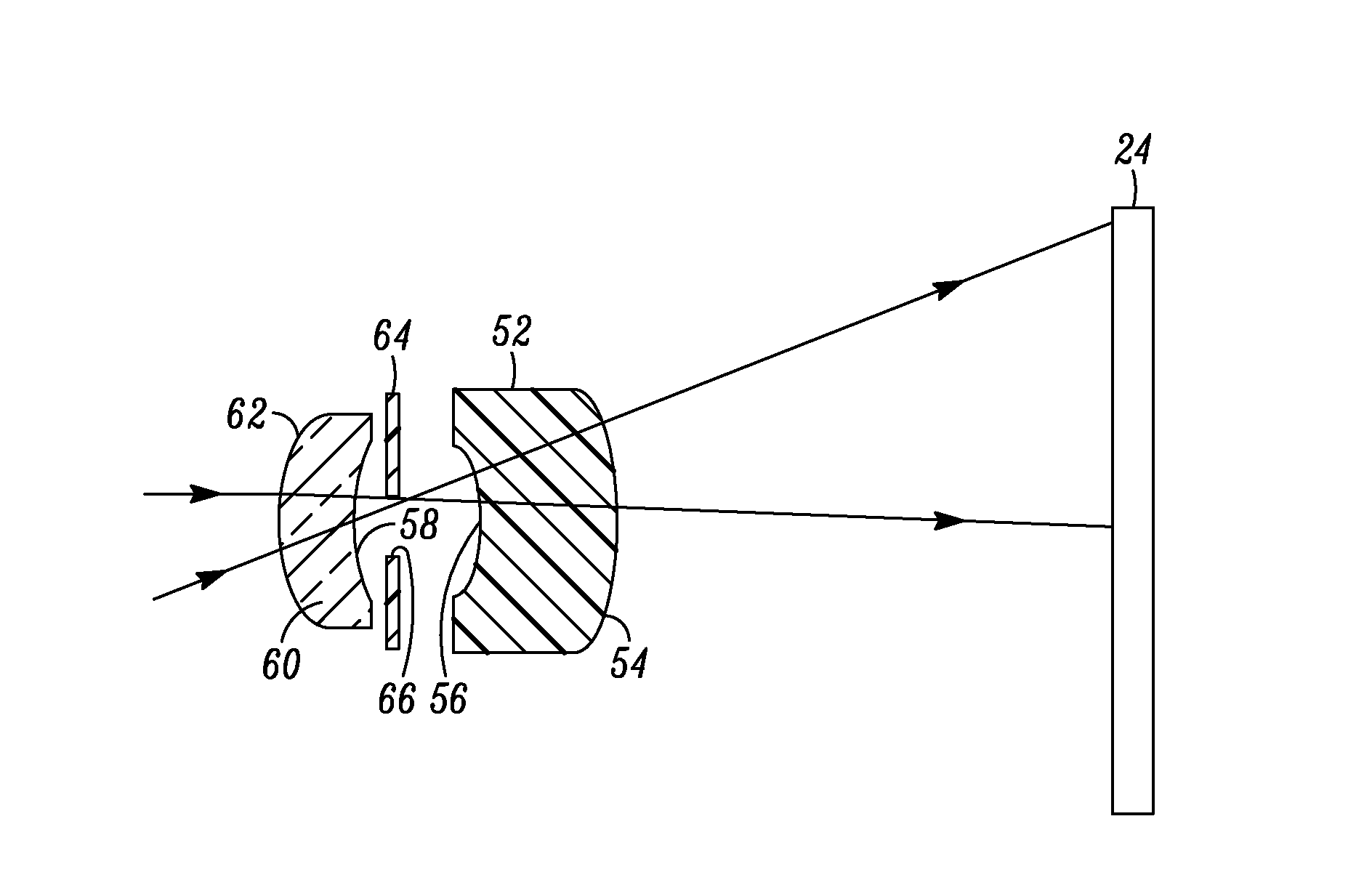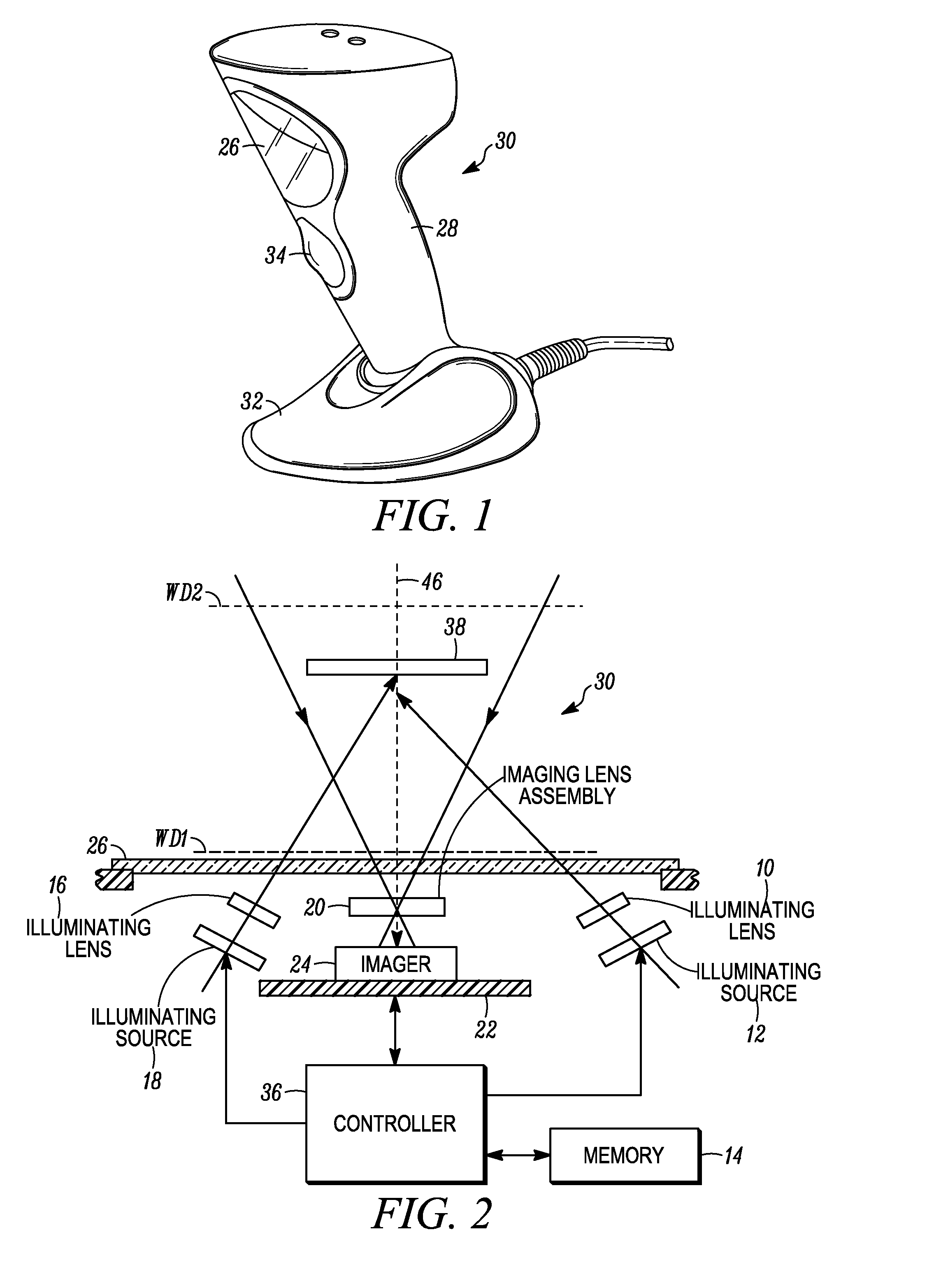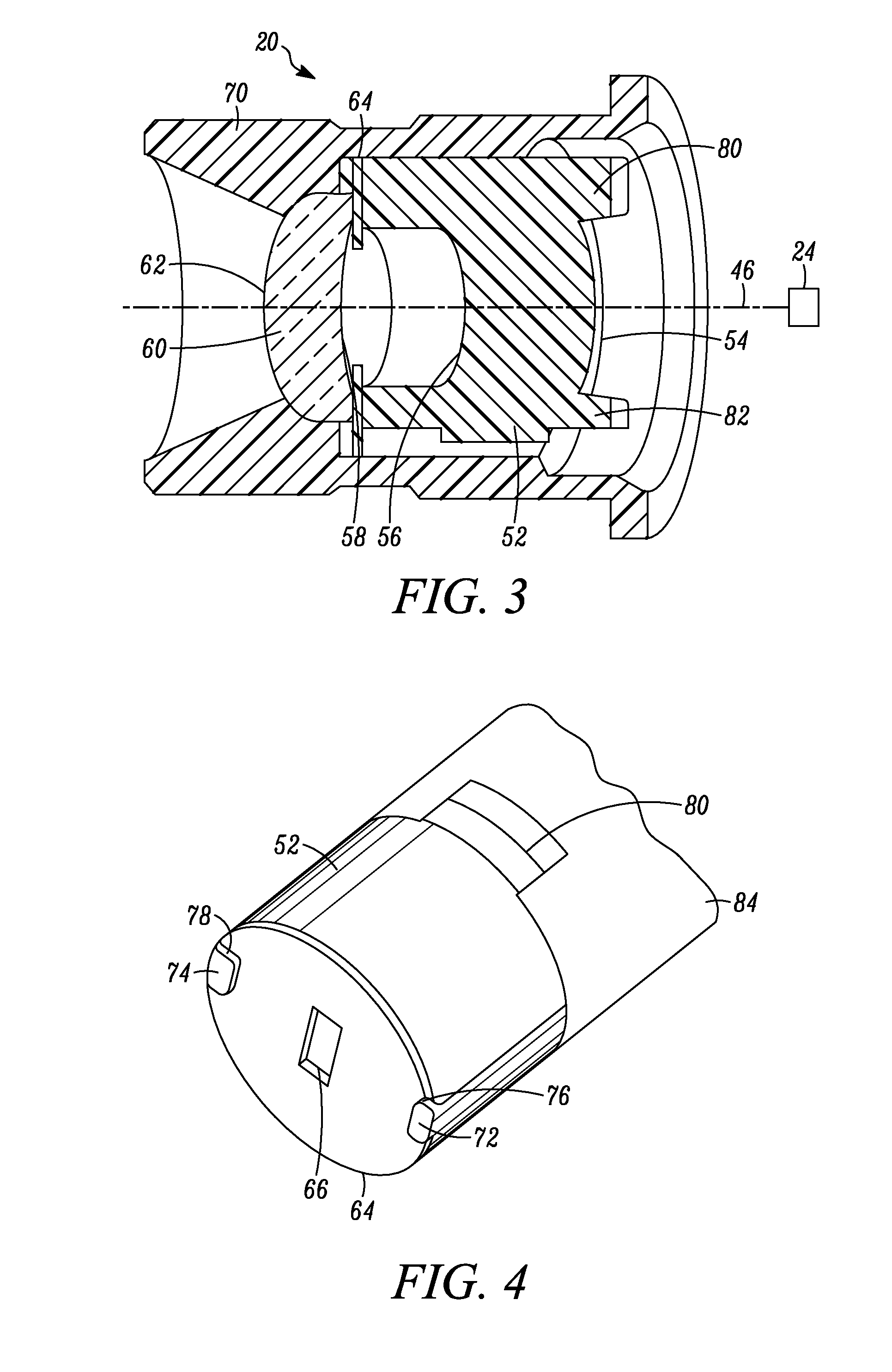Compact hybrid imaging lens assembly in an imaging reader
a hybrid imaging and reader technology, applied in the field of compact hybrid imaging lens assembly in imaging reader, can solve the problems of inability to implement alignment between glass lens and linear sensor array, inability to meet the requirements of electro-optical reading applications, etc., to achieve better thermal stability, reduce the size, weight and cost of the overall assembly, and improve the resistance to focal shift
- Summary
- Abstract
- Description
- Claims
- Application Information
AI Technical Summary
Benefits of technology
Problems solved by technology
Method used
Image
Examples
Embodiment Construction
[0022]Reference numeral 30 in FIG. 1 generally identifies an imaging reader having a presentation area configured as a generally upright window 26 and a gun-shaped housing 28 supported by a base 32 for supporting the imaging reader 30 on a countertop. The imaging reader 30 can thus be used in a hands-free mode as a stationary workstation in which products are slid, swiped past, or presented to, the window 26, or can be picked up off the countertop and held in an operator's hand and used in a handheld mode in which the reader is moved, and a trigger 34 is manually depressed to initiate imaging of a target, especially one- or two-dimensional symbols, to be read at a distance from the window 26. In another variation, the base 32 can be omitted, and housings of other configurations can be employed. A cable, as illustrated in FIG. 1, connected to the base 32 can also be omitted, in which case, the reader 30 communicates with a remote host by a wireless link, and the reader is electricall...
PUM
 Login to View More
Login to View More Abstract
Description
Claims
Application Information
 Login to View More
Login to View More - R&D
- Intellectual Property
- Life Sciences
- Materials
- Tech Scout
- Unparalleled Data Quality
- Higher Quality Content
- 60% Fewer Hallucinations
Browse by: Latest US Patents, China's latest patents, Technical Efficacy Thesaurus, Application Domain, Technology Topic, Popular Technical Reports.
© 2025 PatSnap. All rights reserved.Legal|Privacy policy|Modern Slavery Act Transparency Statement|Sitemap|About US| Contact US: help@patsnap.com



